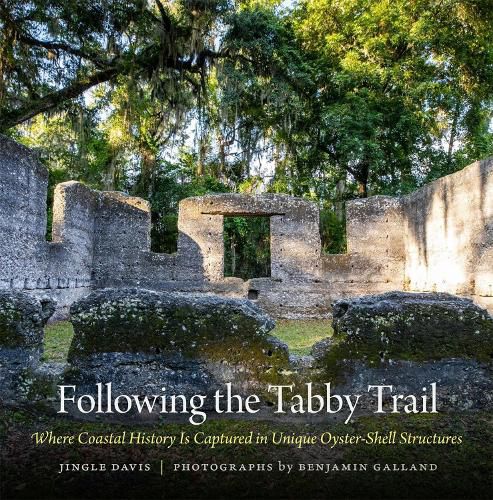Readings Newsletter
Become a Readings Member to make your shopping experience even easier.
Sign in or sign up for free!
You’re not far away from qualifying for FREE standard shipping within Australia
You’ve qualified for FREE standard shipping within Australia
The cart is loading…






Following the Tabby Trail provides a guided tour of some of the most significant tabby structures found along the southeastern coast and includes more than two hundred illustrations that highlight the human and architectural histories of forty-eight specific sites. Jingle Davis explains how tabby-a unique oyster-shell concrete-helps us to understand the complex past of the coast. A tabby structure is, as the author puts it, a storehouse of history. Each of the site descriptions includes the intriguing profile of a historic figure associated in some way with the tabby.
Though the first documented use of tabby in North America was in 1672 in what is now St. Augustine, Florida, Spanish colonists had used many of its constituent parts a century earlier. In addition to their Spanish-speaking competitors, colonizers from France and the British Isles also enthusiastically adopted the building material for their colonial missions. This meant, of course, that enslaved Africans and Indigenous peoples built with the material. Tabby remained a fashionable, effective, and enduring building material until shortly after the Civil War.
This richly photographed work provides readers with a guide to the underexplored string of tabby structures still standing along the stretch of coast between Florida and South Carolina, an approximately 275-mile trail traced by the book from just south of St. Augustine north to the dead town of Dorchester near Summerville. Sites include such varied structures as ancient Late Archaic shell mounds called middens and rings of shells thousands of years old; Fort Matanzas, built in 1742 but named for a sixteenth-century massacre of French colonists by St. Augustine’s Spanish founder Pedro Menendez de Aviles; Fort Mose, a significant feature of Florida’s Black Heritage Trail; and homes of the enslaved, warehouses, Charleston’s seawall, churches, and cemeteries.
$9.00 standard shipping within Australia
FREE standard shipping within Australia for orders over $100.00
Express & International shipping calculated at checkout
Following the Tabby Trail provides a guided tour of some of the most significant tabby structures found along the southeastern coast and includes more than two hundred illustrations that highlight the human and architectural histories of forty-eight specific sites. Jingle Davis explains how tabby-a unique oyster-shell concrete-helps us to understand the complex past of the coast. A tabby structure is, as the author puts it, a storehouse of history. Each of the site descriptions includes the intriguing profile of a historic figure associated in some way with the tabby.
Though the first documented use of tabby in North America was in 1672 in what is now St. Augustine, Florida, Spanish colonists had used many of its constituent parts a century earlier. In addition to their Spanish-speaking competitors, colonizers from France and the British Isles also enthusiastically adopted the building material for their colonial missions. This meant, of course, that enslaved Africans and Indigenous peoples built with the material. Tabby remained a fashionable, effective, and enduring building material until shortly after the Civil War.
This richly photographed work provides readers with a guide to the underexplored string of tabby structures still standing along the stretch of coast between Florida and South Carolina, an approximately 275-mile trail traced by the book from just south of St. Augustine north to the dead town of Dorchester near Summerville. Sites include such varied structures as ancient Late Archaic shell mounds called middens and rings of shells thousands of years old; Fort Matanzas, built in 1742 but named for a sixteenth-century massacre of French colonists by St. Augustine’s Spanish founder Pedro Menendez de Aviles; Fort Mose, a significant feature of Florida’s Black Heritage Trail; and homes of the enslaved, warehouses, Charleston’s seawall, churches, and cemeteries.